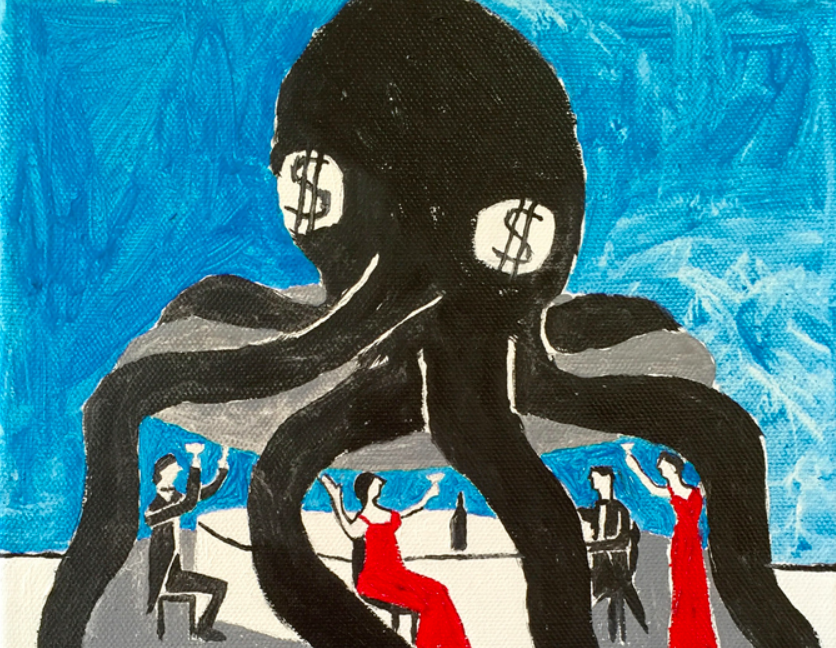aNewDomain.net — Okay, I am sitting here in my usual spot at the boulangerie, latte and croissant in hand, and I summon the new Google Maps on Google Glass.
All I have to do is think about it. The little cerebral cortex sensor in the frame picks it up.
“Aha!” shouts the voice in my earpiece. The voice belongs to John Cleese, who I selected as my interlocutor.
“Time to plan that trip to Las Vegas and, while you’re at it, would you like to buy a dead parrot?” says Cleese. “Just joking. Google Now says you’ve been kicking the idea around in your Google+ Circle of rotters. I see you roughed out a schedule on your Google Calendar and replied to a Gmail flogging a Vegas timeshare free trip boondoggle.”
“Well, let’s get toodling. I’ll lead the way,” says Cleese, with all the sincerity of a grocery store clerk leading me to a jar of sauerkraut.
“I know you prefer driving, but I have checked out distances and traffic on Waze (just acquired by Google) and flying is probably your better bet.” Up pops an overlay of schedules and prices from Google Flights (just added to Google Maps) plus a bunch of hotel deals.
“Ah, $218 on United or Virgin, and Fawlty Towers looks good.”
Jeez, why go to Kayak or Expedia, I ask myself. Google owns ITA Software, the engine behind Kayak, Expedia and most other travel booking sites anyhow. It’s all here, all behind the ramparts of Google’s magic kingdom.
I know some of this is far-fetched. Cortex sensors are in early development and Glass is a work in progress. But the rest of it? Not so much.
I tried out the new Google Maps — at this writing it’s invitation only — and it is pretty cool.

I asked Maps to get me from San Francisco to Las Vegas. It drew me several routes: 1 hour 30 minutes in a straight line by air, 8 hours 38 minutes driving, 27 hours by bus or public transit, 53 hours on a bike and 178 hours on foot over mountains and through sizzling deserts.
Up popped flight schedules and links to United or Virgin so I could book a flight. There were links to public transit and bus schedules should I choose that option. If the highway was my way, there’s live traffic reports, right there on the map.

I called up a Vegas map and found reviews of restaurants (Google owns restaurant reviewer Zagat) and attractions plus the option of surveying my Google+ Circles for advice.
I switched to satellite view and zoomed in on San Francisco and Hong Kong. I was offered up panoramic photos of attractions. I flew through the Golden Gate and around 3D-rendered buildings. The much grander towers of Hong Kong Central, however, looked like a Salvador Dali painting, like chocolate bars melted on the pavement. No 3D — yet.

Content is thin in places, but the new Google Maps could mark a tipping point for travel, from planning a trip, to getting there, to being there. Google Flights had been a distant also-ran to war horses like Kayak and Expedia. Now, with the new Maps, Google Flights is integrated into the mind of the machine along with Gmail, YouTube, Google+, Google Now, maybe Waze in the future, and other stuff. All these platforms mine your data, tweak your social graph, predict your preferences, collaborate in the cloud with both friends and helpful strangers, slap it on a map and, in the case of Glass, literally in your face.
Google is advancing what is known as multimodal search, scrunching all kinds of data from all kinds of inputs. Most people don’t realize that if you consider the number of entities that comprise the travel industry: transportation, accommodations, food, entertainment, sports, museums, even flower shops, it becomes the largest, most-diverse industry in the world. Now you have to surf all over the place to find what you want, then somehow piece it together. Google may soon have the means to assemble and massage enough data to herd all of these cats into one place.
What Google will do with this and how disruptive it will be is yet to be seen. Google+ is mostly off the map of the mainstream travel industry, and for that matter, the general public, which adores Twitter and Facebook. I saw no recommendations from people in my travel industry Circle. But some morning, they may just wake up to find their rooms spinning like an hourglass on an old PC. The way they do business may be about to change … again.
Screenshot image credits: Russ Johnson
Based in Sonoma, California, Russ Johnson is the founder of Travelmedia and a senior editor at aNewDomain.net covering travel. Email him at Russ@aNewDomain.net and follow him @connectedtravlr.












